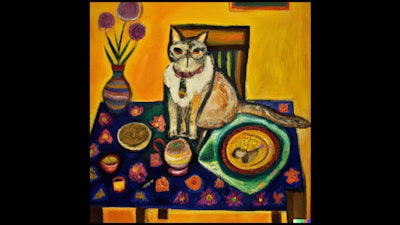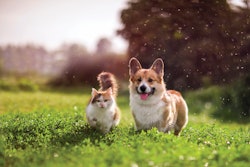
Cats have been the most populous pets in Europe for years. In 2022, Europe was home to 127 million cats residing in 26% of households. The popularity of cats seems to be growing globally. Europe's highly urbanized human populations may find cats may more convenient since cats often need less space and maintenance than dogs in general. As urbanization becomes the norm worldwide, many of the same factors encouraging cat ownership in Europe may fuel the popularity of felines in other regions. A report by Markets and Markets identified five emerging markets for cat food.
5 nations with emerging cat food markets
China - China leads the cat food industries among these five countries. China’s cat care market revenue reached US$5.80 billion in 2022, according to Markets and Markets analysts. They forecast that China’s cat care industry will reach US$13.39 billion in 2027, followed by Brazil and Mexico with expected values of $1,107.3 and $680.5 million, respectively.
Brazil – Brazil had the second largest cat care market in 2022 at US$884.4 million. That value was forecast to increase to US$1,107.3 million in 2022.
Mexico - Mexico’s cat care market ranked third with a value of US$545.7 million, potentially growing to US$680.5 million by 2027.
South Africa - As pet ownership becomes increasingly prevalent in South Africa, particularly in urban areas, there's a growing demand for high-quality cat food products and accessories. With rising disposable incomes and a growing middle class, consumers are spending more on cat food, treats and other products.
India - With a burgeoning middle class and increasing urbanization, cat ownership in India is growing.
These five countries added US$7.43 billion to the cat care industry worldwide in 2022, according to Markets and Markets analysts. Together, Brazil, South Africa, India, China and Mexico had a compound annual growth rate (CAGR) of 20.7% between 2007 and 2011. The analysts forecast these markets to reach a combined value of US$15.42 billion in 2027, with a CAGR of 15.7% from 2022-27.
Rising kitten population in the United States
While dogs remain the most prevalent pet in the United States, cat numbers are increasing. The population of kittens is particularly informative, pet market research director at Packaged Facts David Sprinkle wrote in his Petfood Industry column.
Trended MRI-Simmons data show the number of U.S. households with a puppy under one year old falling from 5.6 million in 2014 to 4.4 million as of 2023. In contrast, the number of households with a kitten rose from 3.1 million to 3.9 million over this period. As a result of these converse trends, the ratio of kitten households to puppy households catapulted from 54% to 89% over the last 10 years (see Table 1). From another data perspective, 12% of current cat parents have a kitten, while under 9% of dog parents have a puppy.
Hungary, France, Austria had most pet cats per capita 2022
The rankings of pet cat populations in Europe don’t reflect the prevalence of pet ownership. More populous nations inherently will tend to have more pets, but they may not have the most pets per capita. However, ordering European nations by per capita pet ownership causes different patterns to emerge.
Last year, Russia had the highest pet cat population in Europe, according to the European Pet Food Industry Federation (FEDIAF) report "Facts & Figures 2022." Yet, the vast nation doesn’t rank in the top 10 of cat ownership per capita. Instead, Hungary rose to the top.
To determine per capita cat ownership, I divided FEDIAF pet ownership data by the human population in 2022, according to Worldometer statistics using United Nations data.
- HUNGARY: 0.24 cats per person
- FRANCE : 0.23 cats per person
- AUSTRIA: 0.23 cats per person
- LATVIA: 0.22 cats per person
- LITHUANIA: 0.22 cats per person
- ROMANIA: 0.22 cats per person
- ESTONIA: 0.22 cats per person
- BELGUIM: 0.22 cats per person
- SLOVENIA: 0.21 cats per person
- UKRAINE: 0.21 cats per person


















